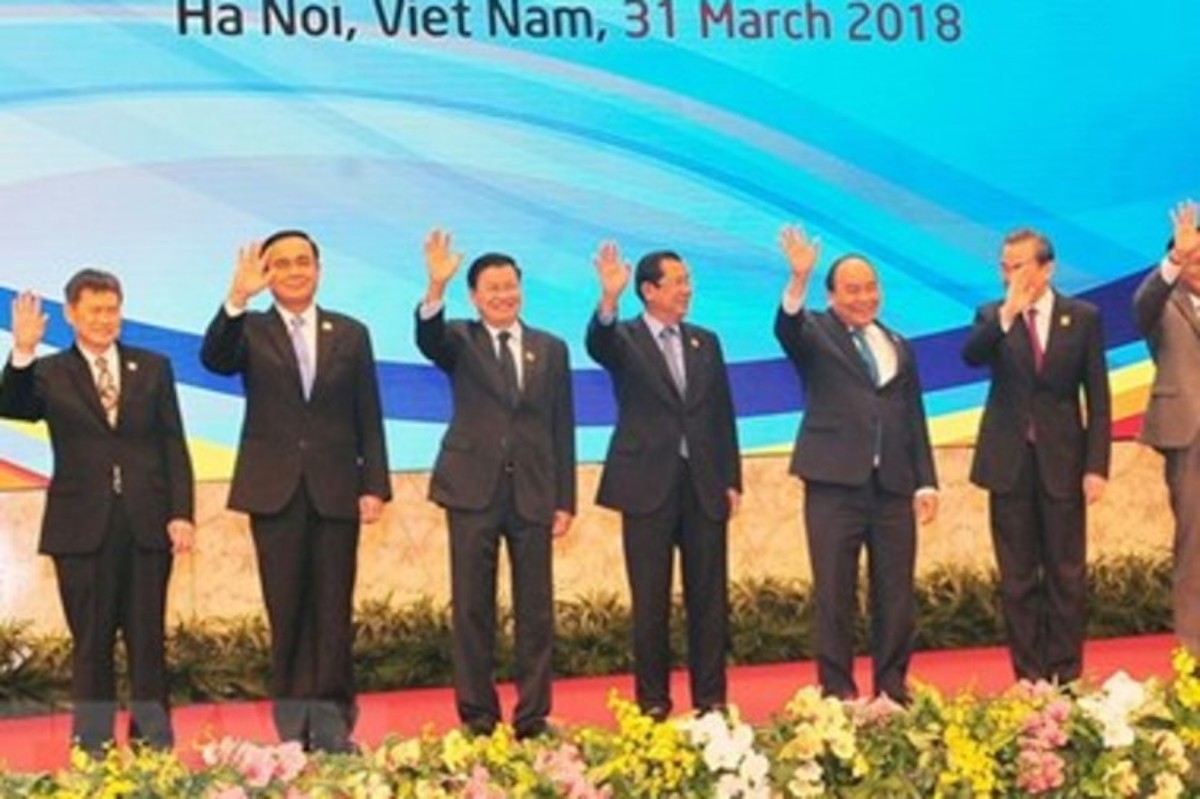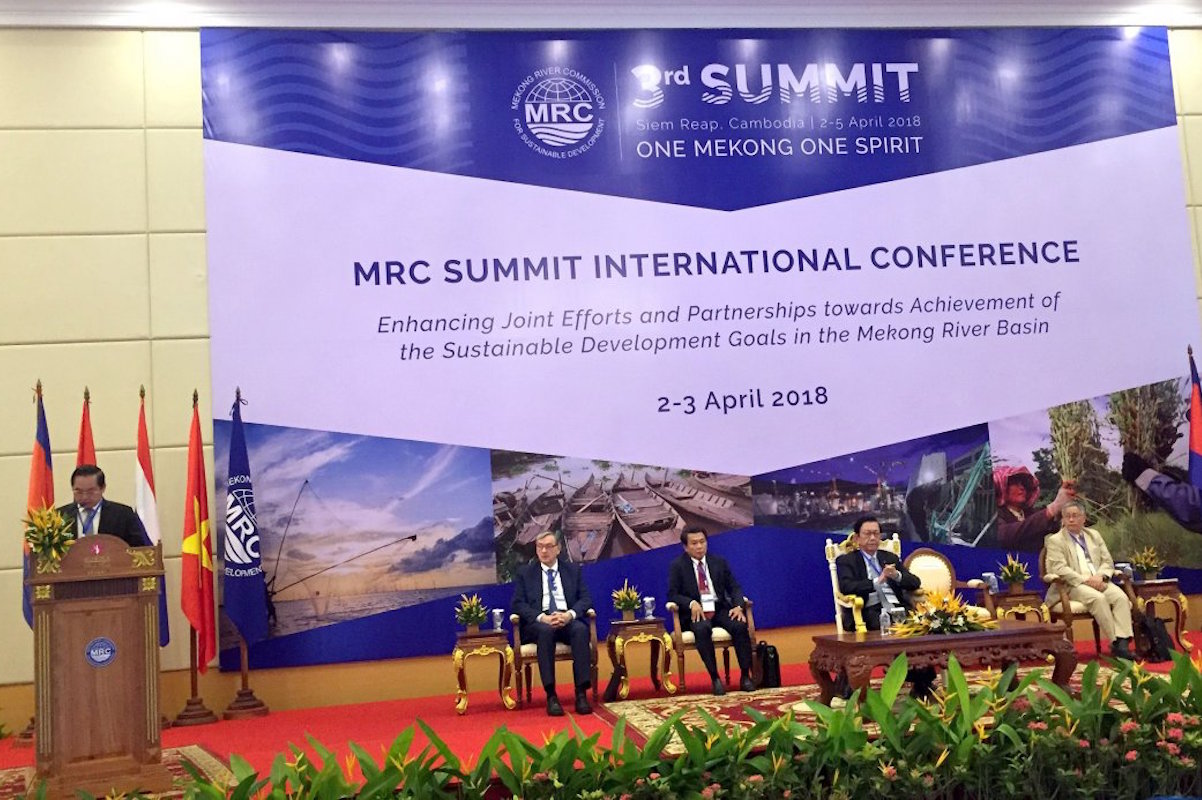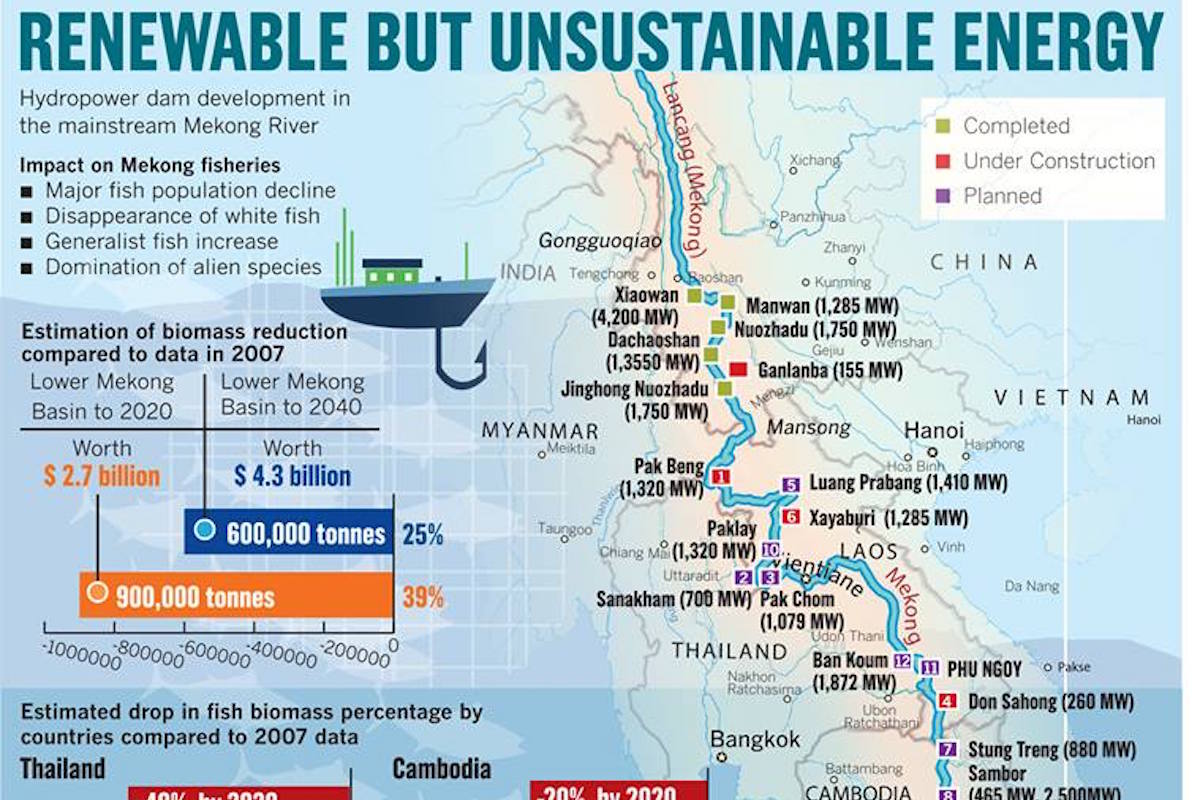It was the sixth time in the 25-year history of the Asian Development Bank-led, Greater Mekong Subregion initiative, that the basin’s leaders gathered. The media dispatches from Hanoi tended positive, possibly taking their cue from the ADB’s celebratory tone highlighting the quarter century achievements.
ADB president, Takehiko Nakao, noted in this widely printed opinion piece, “The countries of the Greater Mekong Subregion (GMS) have made stunning progress over the past quarter century. Once plagued by poverty, they are now economic success stories.”
Functionally, the summit’s main output was the Hanoi Action Plan. This GMS wish list of development finance priorities was featured regionally and internationally largely through the Hanoi AP filing–Mekong Countries’ Leaders Call for $66 Billion Investment. They also issued a joint declaration, praising the past and committing to a brighter future.
The GMS’s economic potential was a theme capturing more local attention: Mekong Countries Can be New Driver for Global Growth (Vietnam Express) and Mekong Region: A New Growth Centre for Asia (Khmer Times). And so too was justifying the need for the Action Plan’s infrastructure: Level Infrastructure Playing Field (The Nation); Prayut Highlights Transport Network as Key to Mekong Growth (Bangkok Post) and PM pushes for Greater Regional Connectivity at GMS Summit (Vientiane Times).
.
Two side meetings also took place: the first-ever GMS Business Summit and the 10th summit of the Cambodia-Laos-Vietnam Development Triangle.
China’s posturing received significant coverage as highlighted by Nikkei Asian Review–China Makes its Presence Felt at Mekong Meeting. A key theme was linking the GMS to China’s Belt and Road Initiative as noted by Chinese Foreign Minister Wang Yi in his official remarks, and as reported by Global Times–China Reinforces Links with GMS Nations. Yi said that the GMS is standing at the door of opportunities, and that China’s development will provide a boost for many countries, both regionally and globally.
These Hanoi dispatches made no mention of the growing social, ecological and economic challenges caused by dams and other infrastructure along the Mekong’s river channels. The river, after all, is ostensibly what brings these leaders together. The harm their policies are causing, however, remained in the background. Nonetheless, today’s Phnom Penh Post offered a small asterisk on the proceedings, peened by IUCN’s Jake Brunner–Mekong Cooperation: Making a Problem Bigger. And somewhat related was Saturday’s South China Morning Post piece–Are Chinese-Funded Dams on the Mekong River Washing away Cambodian Livelihoods. There was, however, some pre-summit coverage that attempted to get these issues before the public: Mekong Nation Leaders to Hold Summit Amid Concerns About Dams (VOA); The Unfolding Mekong Development Disaster (The Diplomat) and Mekong: More Dams More Challenges (The Interpreter).





